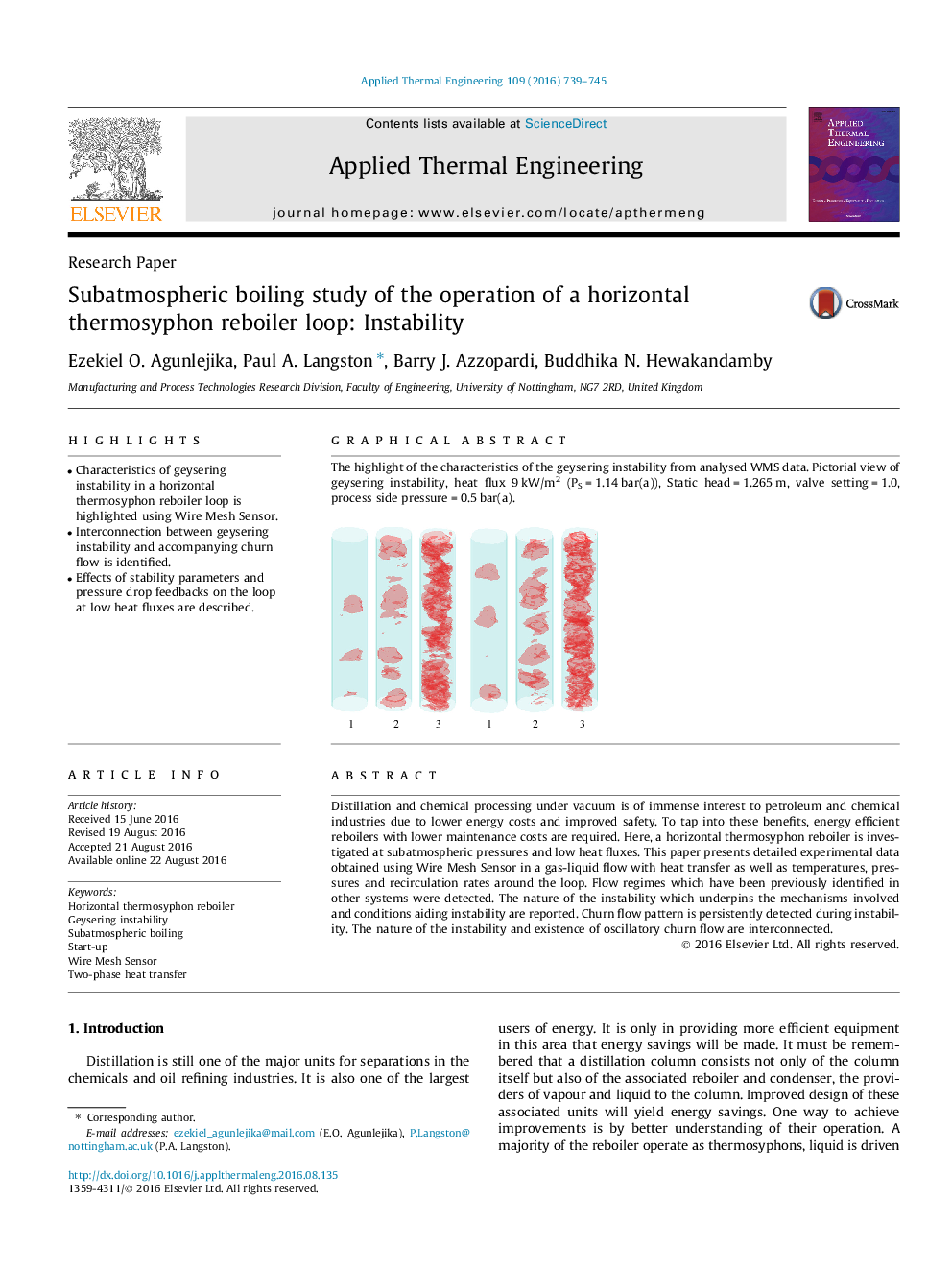| Article ID | Journal | Published Year | Pages | File Type |
|---|---|---|---|---|
| 6481200 | Applied Thermal Engineering | 2016 | 7 Pages |
â¢Characteristics of geysering instability in a horizontal thermosyphon reboiler loop is highlighted using Wire Mesh Sensor.â¢Interconnection between geysering instability and accompanying churn flow is identified.â¢Effects of stability parameters and pressure drop feedbacks on the loop at low heat fluxes are described.
Distillation and chemical processing under vacuum is of immense interest to petroleum and chemical industries due to lower energy costs and improved safety. To tap into these benefits, energy efficient reboilers with lower maintenance costs are required. Here, a horizontal thermosyphon reboiler is investigated at subatmospheric pressures and low heat fluxes. This paper presents detailed experimental data obtained using Wire Mesh Sensor in a gas-liquid flow with heat transfer as well as temperatures, pressures and recirculation rates around the loop. Flow regimes which have been previously identified in other systems were detected. The nature of the instability which underpins the mechanisms involved and conditions aiding instability are reported. Churn flow pattern is persistently detected during instability. The nature of the instability and existence of oscillatory churn flow are interconnected.
Graphical abstractThe highlight of the characteristics of the geysering instability from analysed WMS data. Pictorial view of geysering instability, heat flux 9 kW/m2 (PS = 1.14 bar(a)), Static head = 1.265 m, valve setting = 1.0, process side pressure = 0.5 bar(a).Download high-res image (128KB)Download full-size image
